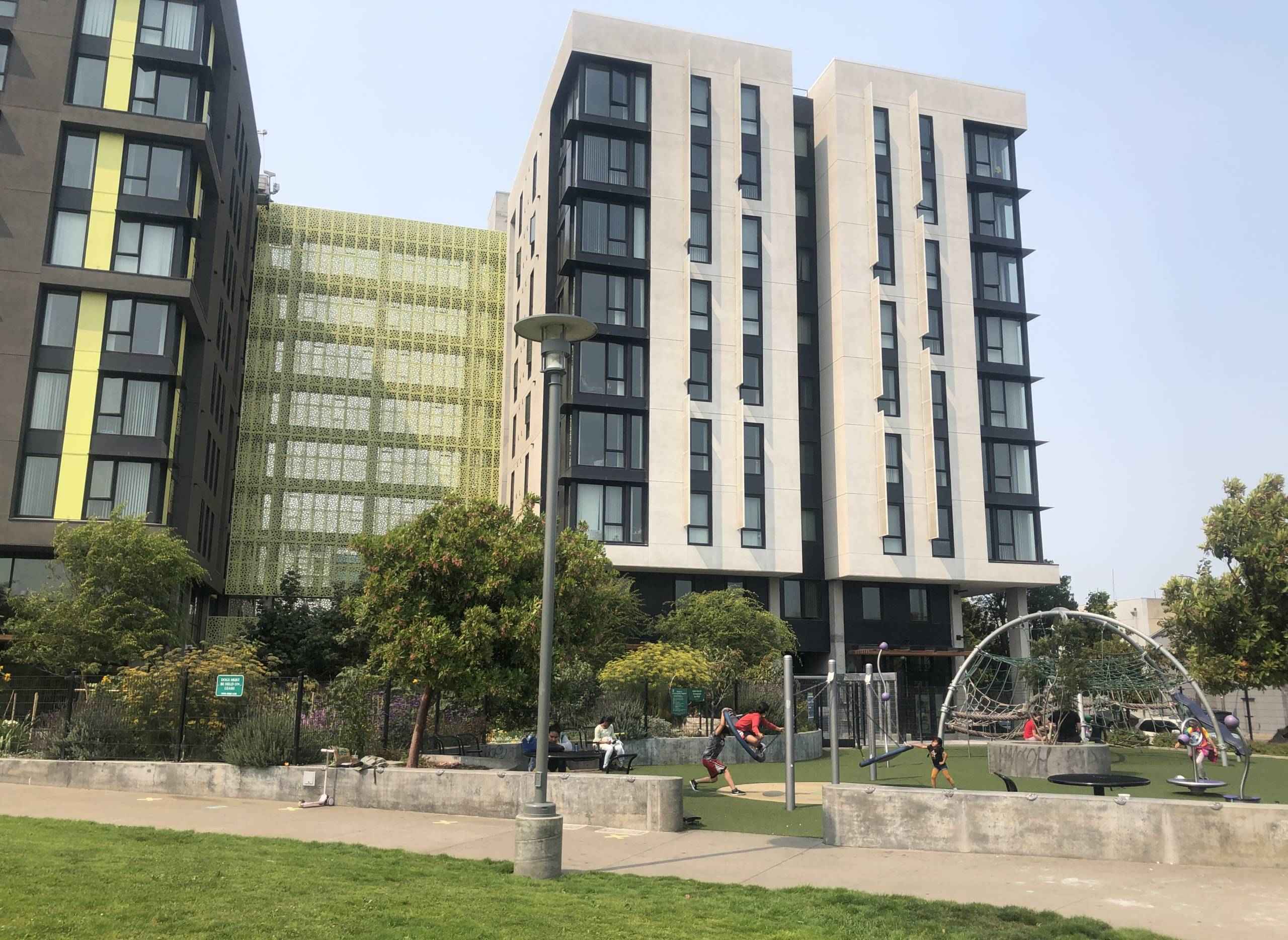I. PREAMBLE
We believe that San Francisco has always been, and should continue to be, an innovative and forward-looking city of immigrants from around the U.S. and the world. San Francisco is not full, and the Bay Area is definitely not full. Ours is an inclusive vision of welcoming all new and potential residents. Anyone who wants to should be able to afford housing in the Bay Area.
II. BUILD MORE HOUSING
- We strongly support building new housing. We have a severe housing shortage. Increasing supply will lower prices for all and expand the number of people who can live in the Bay Area.
- We should build more housing in every neighborhood — especially high-income neighborhoods.
- High density housing goes with high-quality public transit and walkability. However, housing can be built before or in anticipation of the construction of future transit improvements.
- The people most hurt by a housing shortage are those with the least means.
III. DENSITY IS GOOD
We are unapologetic urbanists who believe in the virtues of cities. More people living in close proximity to each other can improve their lives and the lives of those far beyond city limits.
- Density is sustainability: it reduces urban sprawl, reduces water usage, uses energy more efficiently, and creates a smaller carbon footprint.
- Density is accessibility: it encourages walking and biking, makes transit more efficient, reduces social isolation, and increases residents’ access to diverse cultural products and to each other.
- Density is opportunity: it increases access to jobs, supports diverse businesses, promotes innovation, and enables people to be more productive.
- The Bay Area is a particularly efficient place to build housing because of its moderate climate.
- People should be free to choose to live in places that are urban, compact and walkable, low-density and car-centric, or rural. Not everyone wants to live in a dense city. However, current policies restrict the supply of urban housing, leaving suburban life as the only affordable option for many.
IV. HOUSING IS A HOME
- It is not the role of the local government to maximize wealth for property owners.
- Affordability and high home values are incompatible goals – therefore public policy should be based on viewing homes as places to live, not as investments.
- Housing is infrastructure. The primary community benefit of new housing is the housing.
- Filtering exists. Today’s new, expensive housing becomes tomorrow’s inexpensive housing, as long as scarcity isn’t induced by restricting the creation of new housing.
- Local governments should fight blight by expanding economic opportunities and ensuring access to credit for residents, not by seizing blighted properties via eminent domain and razing them.
V. STOP DISPLACEMENT
The Bay Area has the physical space for more housing without displacing existing residents.
- We should maximize the number of Below Market Rate (BMR) housing units as opposed to the percentage of BMR units in new projects.
- Higher priced housing helps protect lower income residents. In a growing economy, higher income newcomers compete for older housing stock and outbid lower-income residents. Adding supply at all levels helps protect existing non-wealthy residents from being priced out of their homes.
- Effective ways to protect and preserve existing affordable housing units include community land trusts, resident owned and controlled cooperatives, the Small Sites Acquisition Program, Real Ownership Opportunities for Tenants Program (ROOTS), maintaining strong tenant protections, promoting home ownership, improving access to credit in minority communities, opposing abusive withholding of housing benefits, expanding federal funding for subsidized housing, providing lawyers for at-risk tenants and homeowners, and building more housing.
VI. ZONING & PLANNING POLICY PRESCRIPTIONS
We believe in long-term planning. Once a citywide or neighborhood plan is made, the process for building should be streamlined, well-defined and predictable. It should not impose significant delays on or add significant costs to a project, nor should individual property owners or neighborhood associations have the power to hijack it.
- As-of-Right building: development plans approved at the departmental level if the project is within existing zoning.
- Mandate or incentivize cities to follow regional master plans and statewide housing policies or mandates.
- California Environmental Quality Act (CEQA) reform.
- Raise height limits.
- Form-based zoning.
- Mixed-use zoning.
- Complete streets.
VII. JOIN US
The housing shortage is not an unintended policy failure. The Bay Area has a housing shortage because of decades of voting and organizing against housing. The solution is to organize for housing.
We must organize our communities, make our case in the media, write to legislators, support projects at hearings, sue to enforce housing law, support pro-housing candidates, and vote for more housing. Join us.
